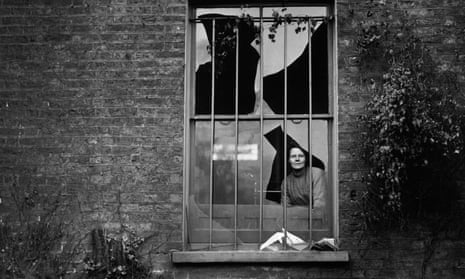The announcement that the site of Holloway prison is to be sold to become a chic London housing address would have astounded generations of women incarcerated there.
Despite repeated alteration and rebuilding in the 163 years since it opened, so that barely a trace of the original architecture survives, Holloway was still described in the most recent report by the prison inspectorate as having “a fearsome reputation”.
Its inmates have included the sisters Sylvia and Christabel Pankhurst and other suffragettes, many of whom suffered the pain and sometimes broken teeth of repeated force-feeding to break their hunger strike. Many were freed from Holloway when they became ill enough to embarrass the government, only to be rearrested and locked up again under what was known as “the cat and mouse act”.
The Moors murderer Myra Hindley fell in love with one of her prison officers in Holloway. Ruth Ellis became the last woman to be executed in England, in Holloway. She was hanged by the state executioner Albert Pierrepoint while a crowd of 500 outside the gates chanted protests against the death penalty. Her body was exhumed with those of other executed prisoners during rebuilding work in the 1970s, and reburied in a churchyard in Buckinghamshire under the name Ruth Hornby to protect the grave from ghoulish souvenir hunters.
A more aristocratic prisoner entered the high gates in 1940. Lady Diana Mitford was often described as the most beautiful woman in England – “her beauty rang through the room like a peal of bells”, a smitten Evelyn Waugh wrote. She became a friend of Adolf Hitler, who sent a chauffeur-driven Mercedes to take her to the Olympic Games in Berlin, and she married the British fascist leader Oswald Mosley at the home of the Nazi propaganda chief Joseph Goebbels, with Hitler as a guest. Mosley was imprisoned in Brixton in 1940, and Mitford soon afterwards in Holloway, which was then in a terrible state, its plumbing system badly damaged by German bombing.
Mitford’s treatment was far from that meted out to thousands of poor women without grand connections. Winston Churchill personally ordered that she should be allowed a daily bath, though in fact water was so scarce that she was reduced to weekly bathing. Mitford ordered in supplies through her Harrods account, and later – again at Churchill’s intervention – Mosley was allowed to join her to live in a small house within the prison walls, where they grew aubergines and fraises du bois in the yard. When both were released in 1943, 20,000 people signed a petition in protest.
Like many other Victorian prisons that would acquire notoriety, Holloway was constructed in an attempt to improve conditions for inmates held in overcrowded buildings that had hardly changed since medieval times. In the 1850s Holloway was still a pleasant semi-rural area, with market gardens and cottages. The prison was originally for men and women, but in 1903 it became the largest women’s prison in the country.
Within a decade, the imprisonment of the suffragettes and the vivid accounts of many, including Sylvia Pankhurst, of the torture of force feeding had made Holloway infamous.
In the most recent report by the chief inspector of prisons, Nick Hardwick, he wrote that although the rate of self-harm was falling, at 63 incidents a month it was still high, as in many women’s prisons, and that Holloway prisoners were anxious and fearful about their safety. “This was not surprising,” he wrote. “Holloway has a fearsome reputation.”
Although there will undoubtedly be protests if the site is sold for luxury housing, few will mourn the death sentence for Holloway as a prison.
